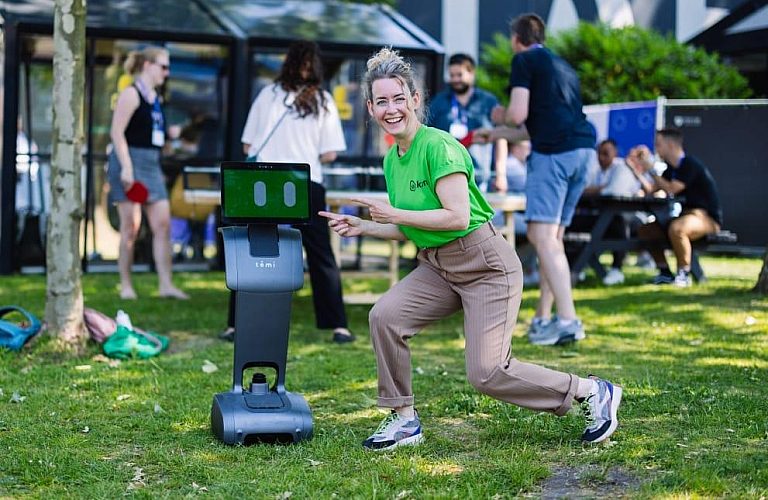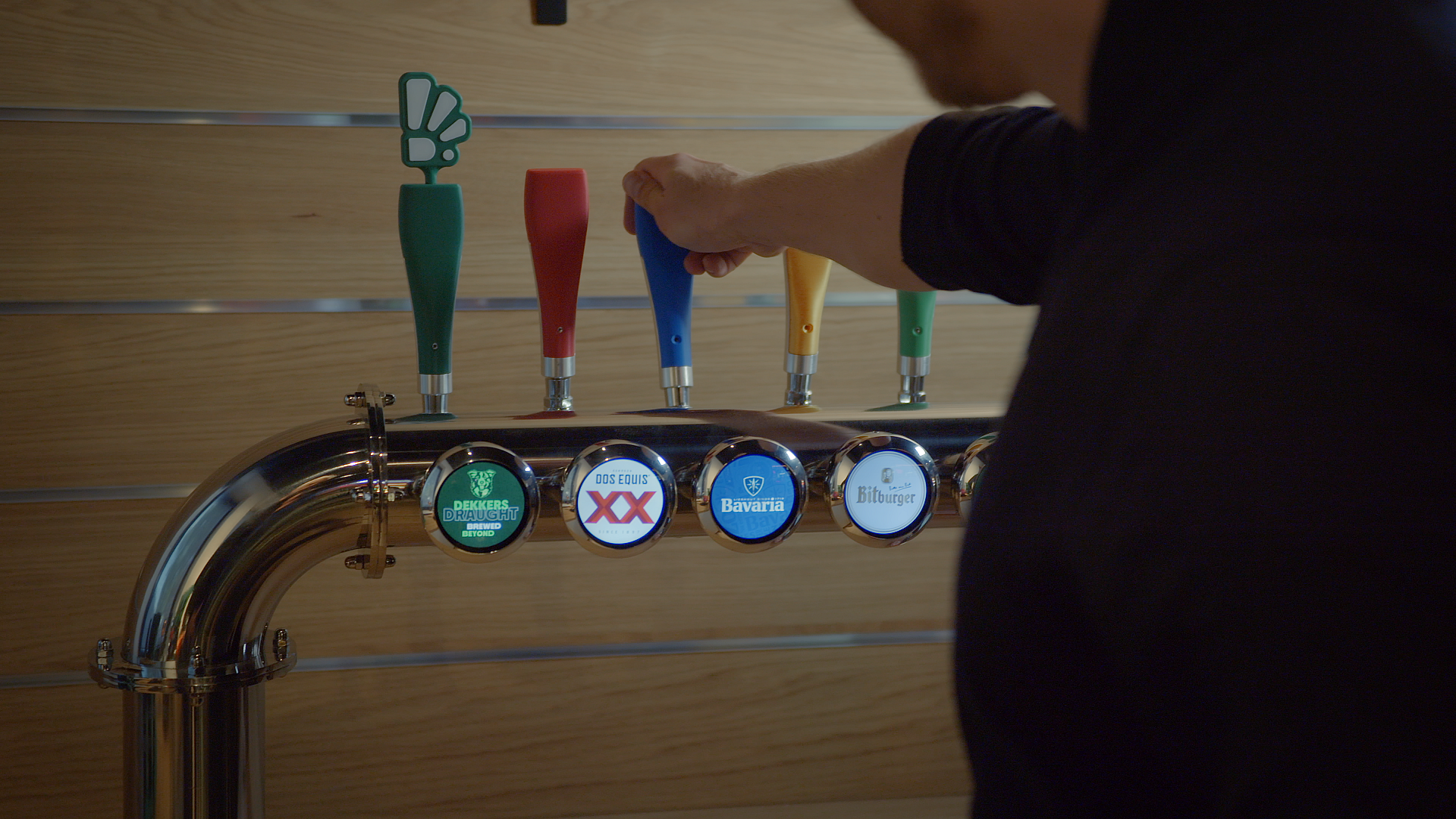Successfully welcome a robot into your team with Welbo
A robot as a new colleague. This innovation is becoming a reality in more and more sectors. The Amsterdam-based company Welbo helps companies to integrate robots into their team. ‘Thanks to developments such as AI, the ways in which a robot can help will only get better.’
Kay de Lange and Hidde Gruben of the Amsterdam-based company Welbo often find themselves having to correct a common misconception about the future: ‘No, robots are not going to replace humans,’ explains Kay, ‘but we are going to work with them more and more intensively. Our name, slogan, and logo reflect the essence of this development: Welbo stands for ‘Welcome Robots to your Team’. We help our customers to truly embrace a robot and make it part of the team. Think of it as a new colleague; you have to learn to work with them, too. We make sure that the robot really adds value.’
Medical field
There is an obvious need for the help that robots can provide in various sectors. ‘The healthcare, for example, is battling with tremendous labor shortages,’ Hidde points out. ‘These shortages aren’t just going to disappear. In fact, the demand for more healthcare personnel is likely to increase due to the aging population.
Obviously, healthcare provision isn’t going to be left solely to robots, without any human interaction. But there are plenty of tasks in the medical world where an innovative robot can help. For example, getting people to the right place in a hospital, delivering medication, or providing remote care.’
Star Wars
Welbo supplies various types of robots, mainly in the hospitality and healthcare sectors. As is the case for many innovations, it was a movie that provided the inspiration for the founding of the company. ‘It actually started quite simply,’ explains Kay. ‘Our founder, Roeland Noort, was watching Star Wars and thought, “Hey, why doesn’t a talking robot like that exist in the real world yet?” From that seed, he introduced Pepper in the Netherlands.’ This snow-white, humanoid robot has since become a familiar sight in several places.
Types of tasks
For innovations such as Welbo’s robots to become more widely accepted, Kay and Hidde argue that it is important to look carefully at which tasks lend themselves to human-machine cooperation. ‘Repetitive tasks are an obvious place to start. By outsourcing these to robots, employees will have more time for higher-value tasks. But it takes time to properly research what those tasks might be in your team. The problem is that many sectors don’t always have the luxury of time.’
Leasing scheme
Welbo supplies social robots to various companies in the Netherlands through a leasing scheme. Many places now have robots that, for example, greet guests or point people in the right direction. This arrangement has several advantages. Kay and Hidde explain: ‘We don’t just deliver a robot to a company and say, “Well, good luck then!” It’s not that our partners are desperate to use a robot for the sake of it, but they do want the service that the robot can provide. To ensure that this service is as good as possible, the robot is constantly being developed based on input from our strategic partners.' Hidde: ‘Another advantage of leasing is that we remain responsible for the robot, so we can guarantee sustainability. We make sure that obsolete models are completely recycled.’
Cloud service
KPN is one of the parties that Welbo couldn’t do without, say both Kay and Hidde. ‘Our robot has a SIM card that connects it to a 5G network,’ explains Hidde. ‘Without that connection, the robot can’t really do anything. The robot’s capabilities run on a cloud application, so having a stable connection is really important.’
The power of AI
Thanks to this connectivity, Welbo’s robots can also leverage the benefits of AI. ‘AI is greatly improving human-robot interaction,’ says Hidde. ‘Conversations are becoming more dynamic and realistic – which also helps to accelerate acceptance of the technology. Anyone who starts working with robots goes through a familiarization process. After that initial transition, working with a robot starts to feel more normal and the work you do yourself becomes more fun, too.’
Curious about how KPN can provide your products with the right connectivity as well? Click here to get in touch.




